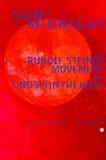 Sun at Midnight: The Rudolf Steiner Movement and Gnosis in the West, by Geoffrey Ahern
Sun at Midnight: The Rudolf Steiner Movement and Gnosis in the West, by Geoffrey Ahern
James Clarke and Co., 9780227172933, 279 pp., 2009
Anthroposophy, and its founder Rudolf Steiner, are topics which, like many others I am sure, I have bumped into during my tears of study. This book, a reworking of Dr. Ahern’s PhD work, is one of those areas I wanted to re-examine. Anthroposophy (and Theosophy, from which it split off in the early 2oth century) underlie much of Western esoteric thought and are, if for no other reason, worthy of study.
Anthroposophy – at least in its “pure” form – is extremely Christo-centric, which may present a stumbling block for some. This is not, however, unexpected as its origins date to a time and place (late 19th century Austria/Germany), which was not particularly, with tolerant of non-Christian religious express, with few exceptions.
One of the difficulties encountered by an outsider trying to understand the movement is that a great deal of the information is, traditionally, taught only within the organization in a classic mouth-to-ear kind of teaching – although this is beginning to change in the modern, internet world which we inhabit now. Even such a basic thing as membership numbers are not discussed to any degree outside of the “centres” where members meet. Thus there remains a feeling that there is something so unconventional as to be unsavoury about the teachings.
The subject of this book is, to say the very least, extremely complex. The treatment it receives is equally complex. Being written by an “outsider” it will likely not please many who follow Anthroposophy, who will feel it does not convey the essence of their beliefs. It will also not please those who are looking for the “secrets” of the movement, since none are revealed. It is as close to an unbiased presentation as it is possible to produce, given the resources available.
There were times when I had to go back and re-read some segments due to the way in which Steiner expressed himself. I sometimes needed to remind myself that followers of specific traditions often have views which are widely divergent from currently accepted thinking (and that such divergence does not necessarily make them wrong, merely different). I also had to remember that even Steiner himself admitted that he may have made some mistakes, so not everything needed to be accepted as “gospel truth”.
There is a lot of information contained within these covers, in some instances almost too much, but it contributes to an understanding of an organization an a movement which is little known to society at large. Those with a psychological and/or sociological interest will this this book to be a gold mine of insight.
It is, by no means, the last word on Anthroposophy but it does offer an outsider’s (mostly) unbiased points-of-view. It lacks an insider’s perspective, but at the same time it also lacks the insiders’ attempt to justify their belief. This work offers a snapshot in time of a little-understood movement and should help to promote understanding and tolerance.







